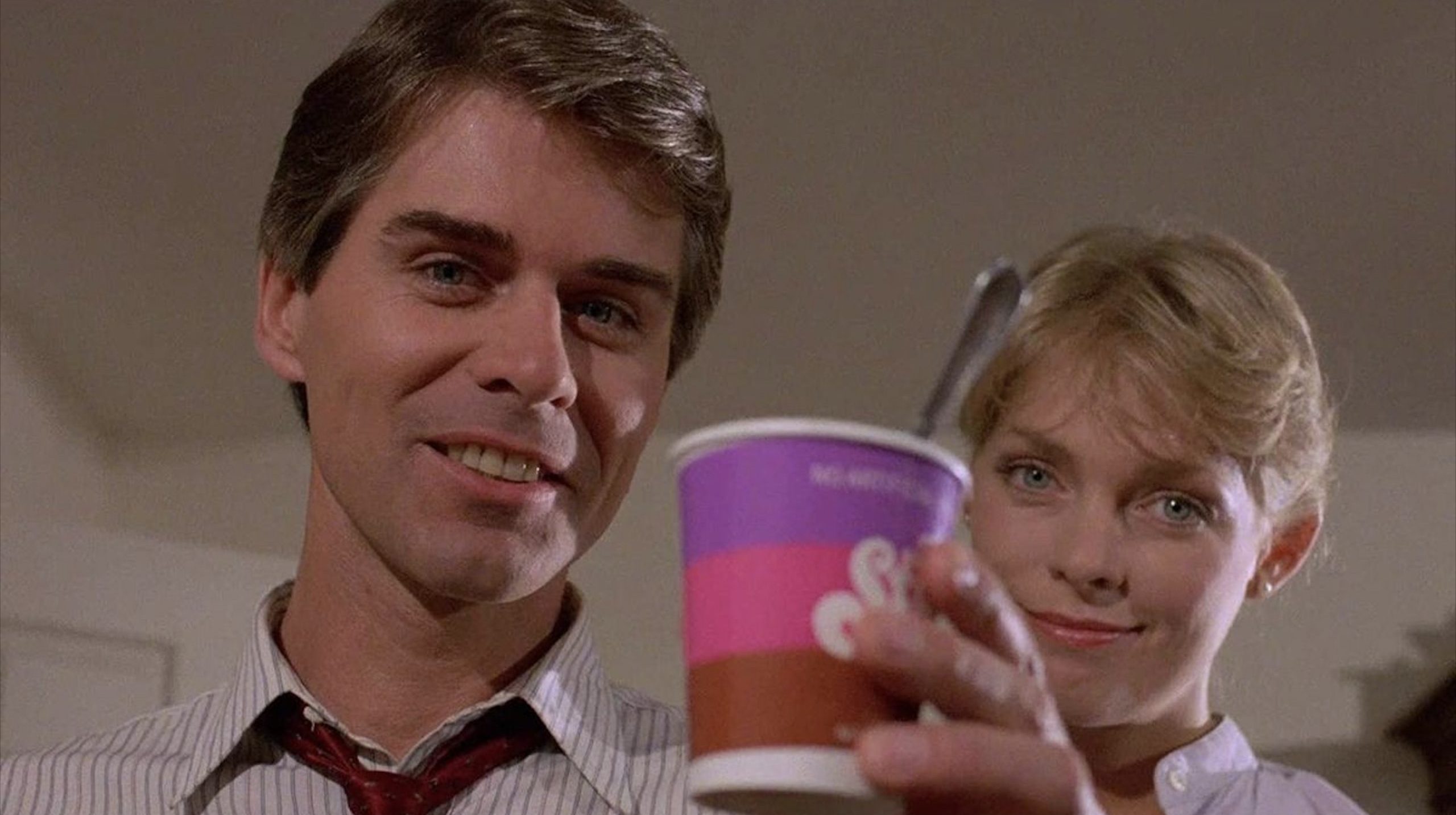Table of Contents Show
It is impossible to live without consumption. Clothing oneself, nourishing the body — these are the pesky necessities that come with being human. And living in a capitalist society begins to warp one’s understanding of these ideas or, at the very least, cloud the mind from rational judgment.
After all, advertising has become inescapable, creating an obscured line between what constitutes as a want and what constitutes as a need. These ideas that accompany consumerism have been a recurring point of conversation in film and media, a notion quite ironic considering that films themselves are a consumer product. In particular, both trash cinema and horror cinema, with particular emphasis on zombie horror, have a penchant for commenting on American consumerism through their use of excess and depiction of nonsensical craving for consumption.
Gimme Just A Little Bit (More): Excess & Trash Cinema
Excess is where both trash media and consumerism thrive. Both malls and consumer-based narratives provide, what seems like, endless options and possibilities. In shopping malls, there is store after store (after store, after store) — each filled with a new product to purchase. Any and every door is at the consumer’s disposal, ready to transport one in a new direction filled with a surplus of wants and wishes. The notion of surplus – an excess of production of supply over demand (( “Surplus.” Merriam-Webster.com. Merriam-Webster, 2022. )) — is an idea so deeply ingrained into the American consumer, that it feels normal to expect that out-of-season-fruit in the produce section. And, what better place for the consumer than a shopping mall, where every desire can be found just footsteps apart!?
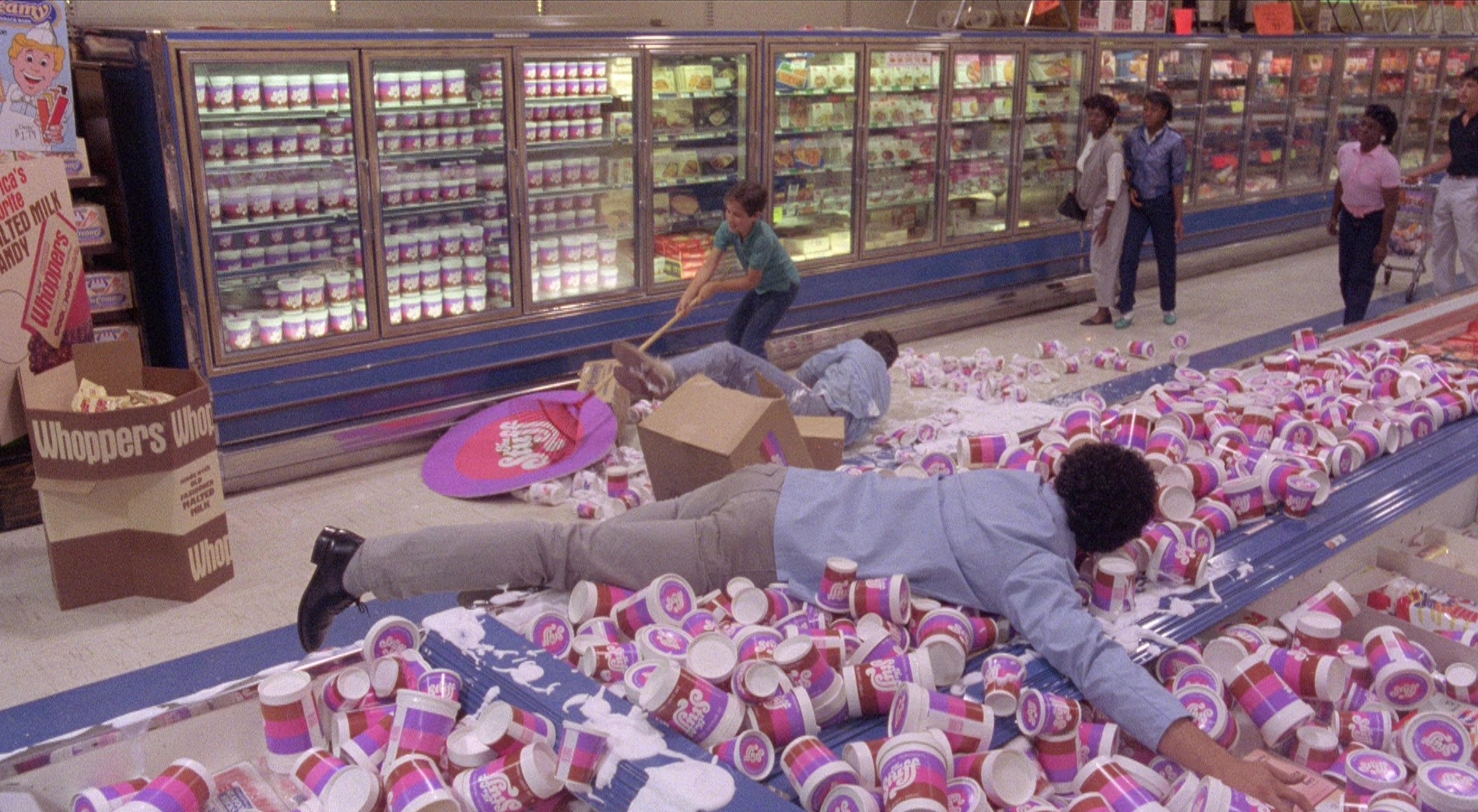
The functions of trash cinema act as a parallel to the infinite potential of the great American shopping mall. Movies that are considered “trash” are usually made at very low quality with a very low budget and, most importantly, they are made in abundance. Since films of this nature are of low stature, they play by a different set of rules than their highbrow companions. These films are easier to produce and, therefore, quicker to make. Just as a cheaply-made fast fashion t-shirt can be quickly replicated, the abundance of trash cinema being created is inherently trash in itself.
It is not just cinema where these ideas of excess are being explored, either. Contemporary media is overflowing with excess, whether it’s a reality television show that happens to be on its fifteenth season or the seventh remix of a popular song. Rina Sawayama, a Japanese-British actress and pop star, sings about this ironic consumerist character the nation embodies on her debut album, SAWAYAMA:
“Gimme just a little bit (More) / little bit of (Excess) / Oh me, oh my! / I don’t wanna hear (No, no) / only want a (Yes, yes) / Oh me, oh my!”
(( Rina Sawayama. “XS.” SAWAYAMA, Dirty Hit and Avex Trax, 2020. Spotify. ))
Disguised as an upbeat, early 2000s-like tune, Sawayama has explained that the song is mocking capitalism in a world of the climate crisis by saying: “We’re all hypocrites because we are all capitalists, and it’s a trap I don’t see us getting out of.” (( Rina Sawayama. “XS.” Genius Lyrics, 2020 ))
Her music video for “XS” continues this deriding critique as she takes the form of a malfunctioning cyborg, like a character out of the satirical, psychological horror film, The Stepford Wives (1975; Bryan Forbes). In the video, Cyborg Rina walks onto the fictional morning show to promote a shimmering golden sham of a product, even as she begins to break down. Meanwhile, throughout the video glimpses are shown of a dingy basement where this golden liquid is being packaged. Sawayama offers up a metaphor for the working class, especially as the video progresses to reveal the horrifying discovery that the liquid is coming from a strange creature literally having their life sucked out of them.
Horror Versus B-Grade Horror Versus Exploitation
Before diving into an analysis, some clarifications must be made on the distinctions between horror movies, B-grade horror movies, and exploitation movies. Horror movies, like any film genre, are composed of a vast array of differing qualities and sub-genres. B-grade horror movies are commonly referred to as movies made on a low budget and known for their poor quality of production and performance. Exploitation movies are works purposefully made to attract an audience by their use of controversial and titillating content. The common point for all three of these categories are that they are often referred to as “trash.”
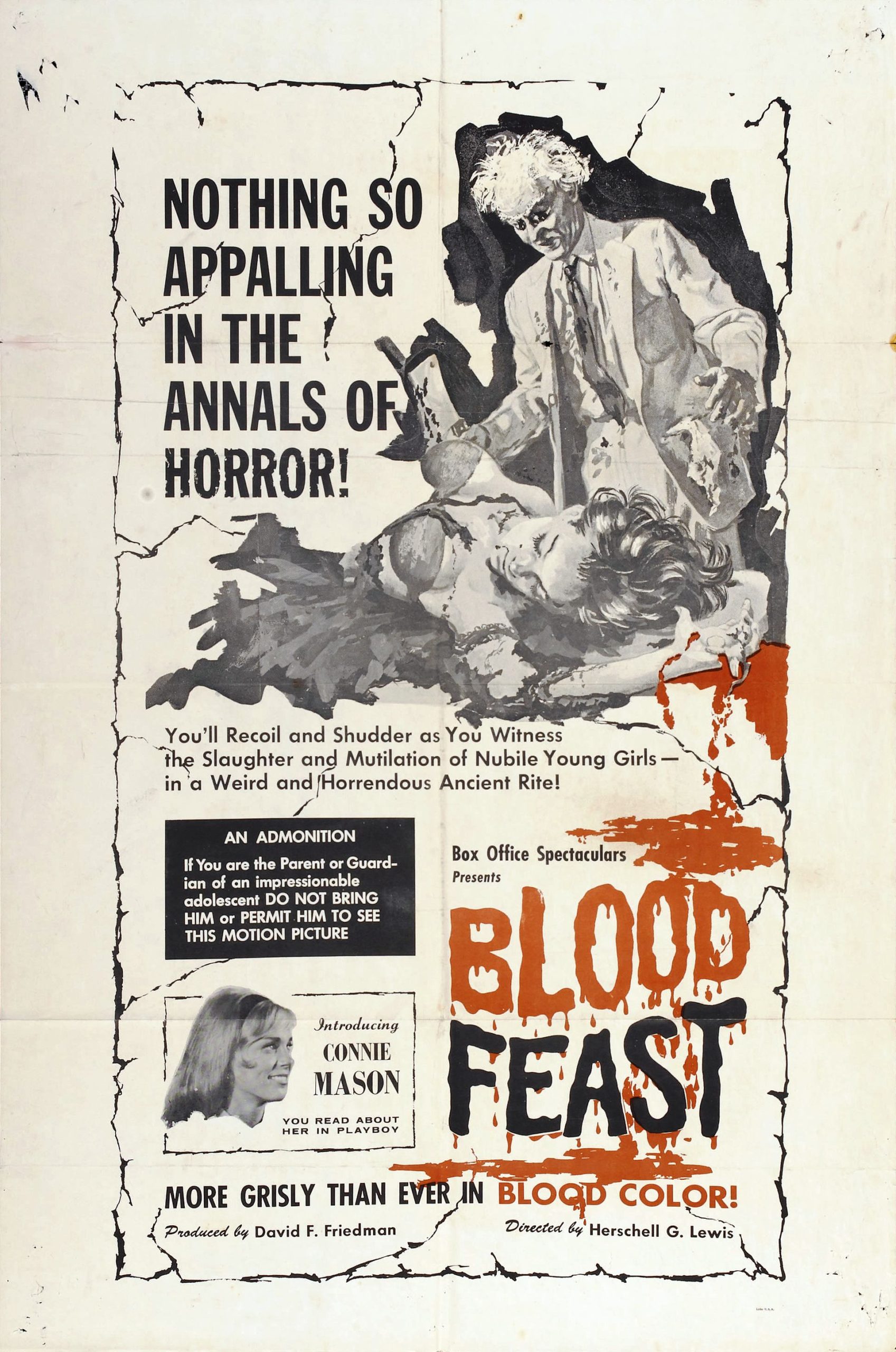
While the horror genre as a whole has never received unequivocal respect, it would be remiss to claim a work like Midsommar (2019; Ari Aster) is executed as effectively as a movie like Blood Feast (1963; Herschell Gordon Lewis). Midsommar is a horror film that has received critical acclaim from highly respected directors such as Martin Scorese and Jordan Peele. Blood Feast, “a notoriously lowbrow effort,” (( Kennedy, Michael. “Why Blood Feast Is The Worst Horror Movie Stephen King Has Ever Seen.” ScreenRant, 17 July 2021. )) is an exploitation film that also received notice from a popular name, but for the wrong reasons.
Stephen King, a man who rarely uses his platform to talk about the horror movies he failed to enjoy, cited it as, “the worst horror movie he’s ever seen.” (( Kennedy, Michael. “Why Blood Feast Is The Worst Horror Movie Stephen King Has Ever Seen.” ScreenRant, 17 July 2021. )) Comparing the laughably bad performance of Blood Feast against the careful deliverance of Midsommar is just unfair; the two works are on separate playing fields. In general, horror loves to play footsie with the taboo line. Often, it steps right over it, reveling in its use of shock and excess — whether that be excessive screaming, excessive gore, excessive violence, etc., etc., etc. But some films, like those along the lines of Blood Feast, or even Paul Verhoeven’s Showgirls (1995), Anthony C. Ferrante’s Sharknado (2013), and Larry Cohen’s The Stuff (1985), take that excess to a ridiculous extreme.
The Stuff (1985) + Toxic Consumerism
Through its utilization of satirizing a horror-esque narrative, Cohen’s The Stuff is a movie that captures the striking consuming habits of Americans. The work starts with The Stuff, an ice cream-like white fluff, bubbling out of the ground like an oil reserve. From there, the gooey fluff begins to take on a life of its own, as the film jeers at the absurdity of cultural buying habits.
While it is an objectively bad movie, The Stuff illustrates how advertising with a catchy jingle and vibrant coloring can succeed in capturing the eyes of a consumer — something everyone is capable of being. In an incredibly on-the-nose way that trash cinema hilariously loves, The product being sold is named, “The Stuff.” This clever name shows the essence of true consumerism and spotlights the toxic, collective desire for stuff. No matter how ridiculous, the right advertising can persuade one that a product is a necessity, even if that product is literally a tasty, soul-sucking mush.
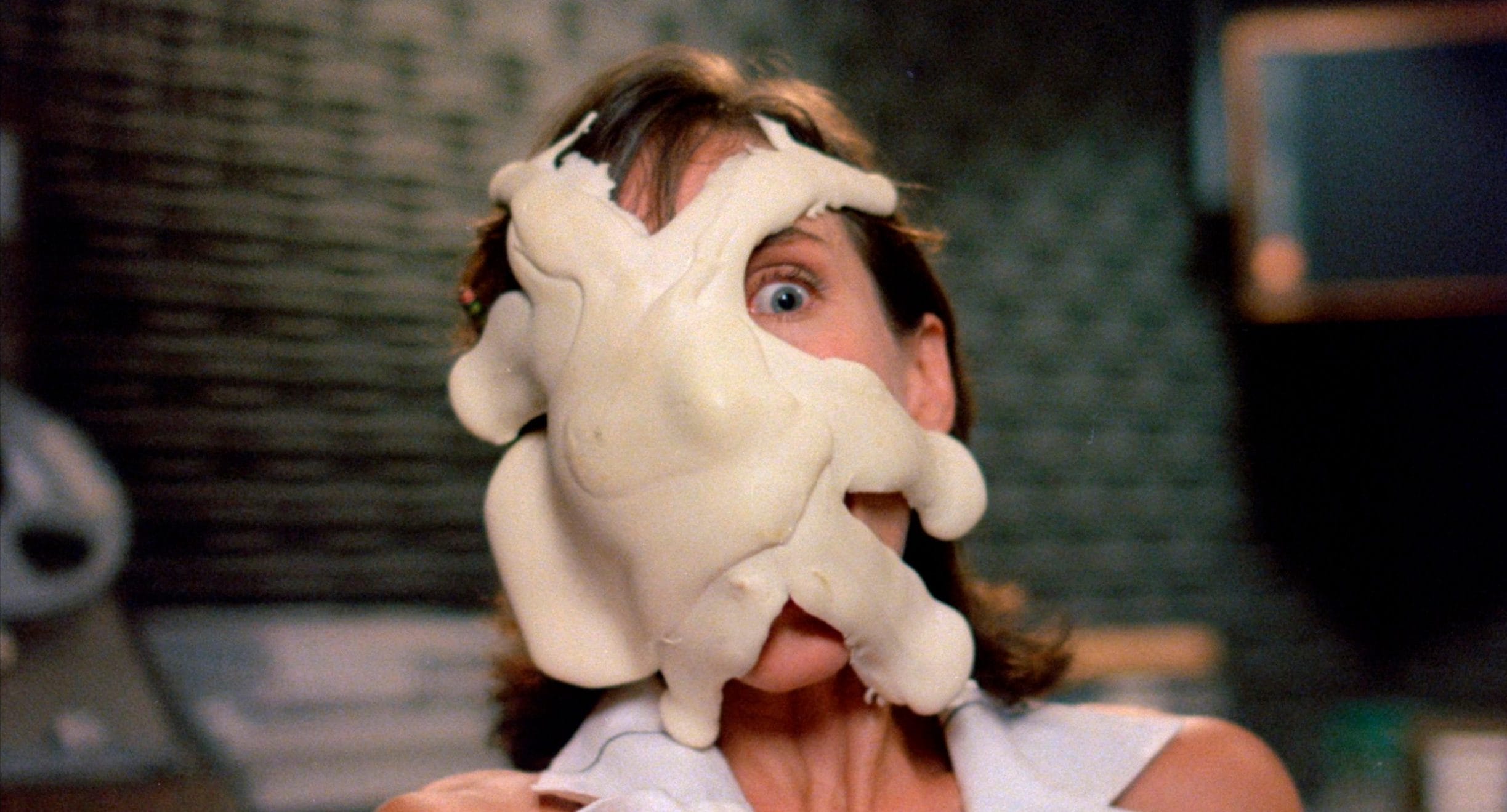
The over-the-top excess of the goo surrounds the movie so much so that it is difficult to find a shot without the product in frame. The substance in the movie is marketed as a health craze, albeit it takes an ironically lethal turn. The Stuff, both figuratively and in the literal sense, takes control of the victim’s body (victim and consumer being interchangeable terms here), and leaves them a dry, empty vessel. Cohen is not aiming for complex subtext, but spelling it outright: The Stuff acts the same way corporate America treats their consumers — valuable until there is nothing left to gain from them. Wanting more and more (and more, and more) with no real reason is a form of uniquely blinding horror itself.
The Stuff‘s ability to showcase the terror of consuming culture through a caricaturing display in which the product consumes the consumer exhibits trash cinema’s rather intelligent blending of humor and social commentary.
Shopping Malls As The Bad Place
As previously mentioned, the motif of the abandoned shopping mall is another example of parodying consumer culture, often found within the horror genre. From the Fear Street trilogy (2021; Leigh Janiak), to Stranger Things (2016-; The Duffler Brothers), to Chopping Mall (1986; Jim Wynorski) to Dawn of the Dead (1978; George A. Romero), these examples all utilize the trope of the mall as the Bad Place. The Bad Place being an archetype both, “less and more than the haunted house…the Bad Place, in short, can be any and every place — and often is, which makes it plenty scary.” (( Bailey, Dale. “The H Word: Bringing The Horror Home.” Nightmare Magazine, no. 7, Apr 2013. )) While shopping malls have declined in recent years, they were once the pinnacle of consumerism in America. Highlighting the foolishness of consumerism, situating the mall as the Bad Place works to say, “Look at the evils inside this place! It is a spoon-fed facade! It is no good!”
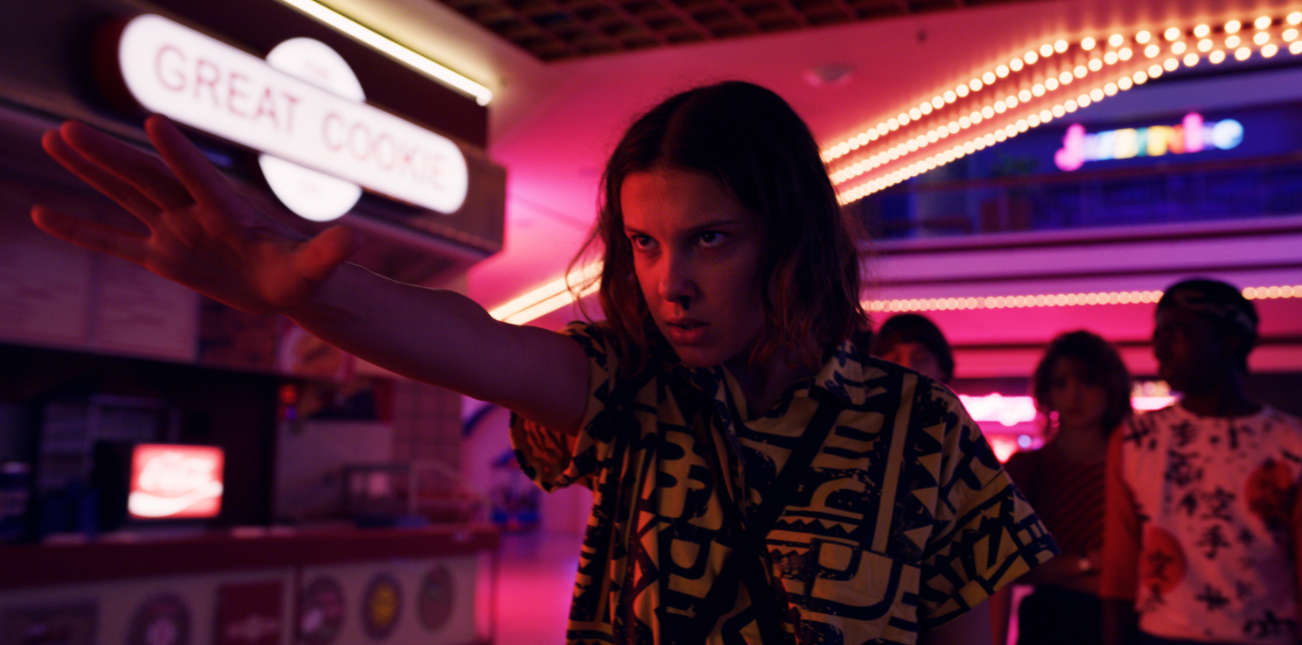
Some media is more overt in its approach, presenting a cynical stance on consumerism by exploiting the excess the mall provides or directly talking about the impact of the mall. Chopping Mall does so by featuring laser-shooting robots to present the dangers of consumption inside the mall. After a group of Park Plaza Mall employees throw a late-night party at their shopping center, they find themselves in for a horrifying night as the new security droids take a murderous turn.
The message here is clear: the mall is for shopping. If one is not buying, they are just another body in the way. Other examples include Romero’s sardonic take on consumerism presents the same criticism of consumer culture but adds the element of zombies as metaphors for the lifeless shopper in Dawn of the Dead. As well as the Starcourt mall’s grand opening in Stranger Things is a controversial point of topic in the show. It is directly referenced as being a threat to the small businesses in the fictional town of Hawkins and presented as a popular hangout location to students.
“Girls Just Wanna Have Fun”
Night of the Comet (1984; Thom Eberhardt), also uses the mall as a location in its apocalyptic horror, but instead of solely positioning it as the Bad Place, the mall is a comforting haven. Comet is set in a world where a rare-occurring comet passes over Earth, turning those affected into either dust or zombies (set during Christmastime too, the ultimate consumer holiday). Two teenage girls who have survived this phenomenon fight against both the zombies and the scientists who wish to experiment on their bodies to find an antidote. The sky is red, clothes lie in the streets but, “the stores are open!” (( Eberhardt, Thom. Night of the Comet. 1984. ))
After the exclamation of “the stores are open,” the scene cuts to a boom-box blasting Cyndi Lauper’s “Girls Just Wanna Have Fun” as it transforms into a montage of the two girls running through the department stores, trying on hats, dresses, and jewelry. Even in apocalyptic times, the ingrained desire for stuff exists. Yet, these characters are not fumbling ditzes, nor are they brawny, badass teenagers. They exist somewhere in-between. But, that is the brilliance of Comet. These are two normal girls who find themselves in a peculiar situation, but the viewer feels for them and relates to them. The silly mall montage may be childish, but it is something every person watching Comet wishes they could do themselves. Ultimately, malls are the adult playground.
Zombies As The Mindless Consumer
Dawn of the Dead is, perhaps, the most blatant look at consumer critique in film. Zombies are a brilliant juxtaposition to incorporate into a shopping mall, a symbolic space of youth culture where everything is new and shiny. In general, zombies work as effective horror because of their terrifying contrast to the vibrancy of youth and life. Positioning the terror inside a mall, zombies become a metaphor for the lifeless consumer, dead and roaming. Stephen King writes about this peculiar contiguity, by saying:
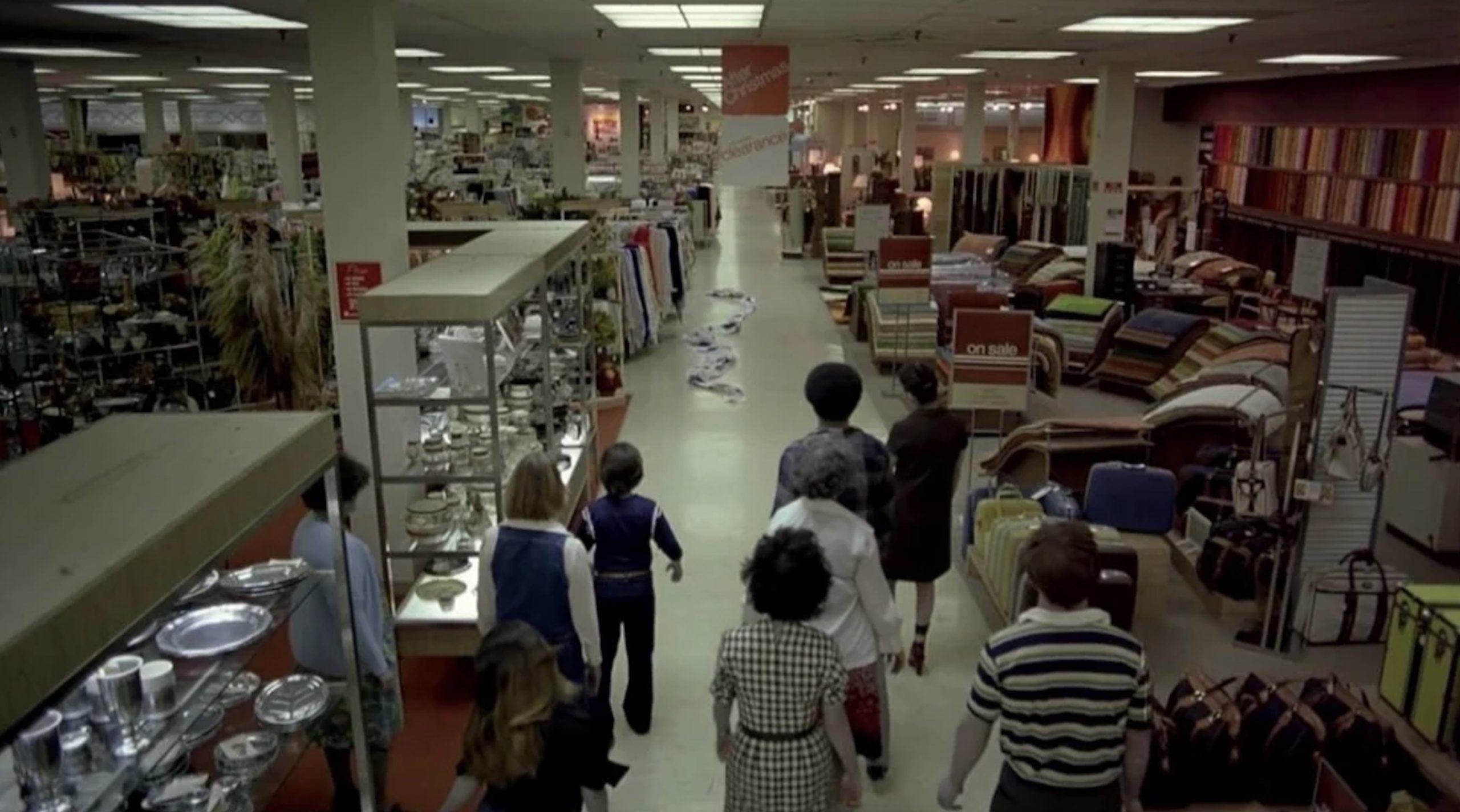
“Here is the final truth of horror movies: They do not love death, as some have suggested; they love life. They do not celebrate deformity but by dwelling on deformity, they sing of health and energy. By showing us the miseries of the damned, they help us to rediscover the smaller (but never pretty) joys of our own lives.”
(( King, Stephen. Danse Macabre. New York, Everest House. 1981. ))
In the zombie film, consumption takes on many meanings. Zombies themselves thrive in excess — they consume human flesh and never seem to be satisfied. They crave and crave (and crave, and crave). The horrifying truth is that zombies are consumers themselves, a stand-in for any average Joe. Even in death, humanity cannot escape the craving for consumption.
Encouraging Introspection
Everyone wants stuff. It’s a desire entrenched into all, an inescapable side-effect of capitalist society. Both trash and horror cinema, especially in that of the zombie film, have a particular way of commenting on that pressure point of American consumerism through their use of excess and depiction of senseless consumption. While the frivolous desire to accumulate copious amounts of more and more (and more, and more) stuff continues, works such as The Stuff, Rina Sawayama’s “XS,” and Dawn of the Dead remind those to slow down and reflect upon their own consumerist habits — or, at least, give us the opportunity to have a laugh at them.
